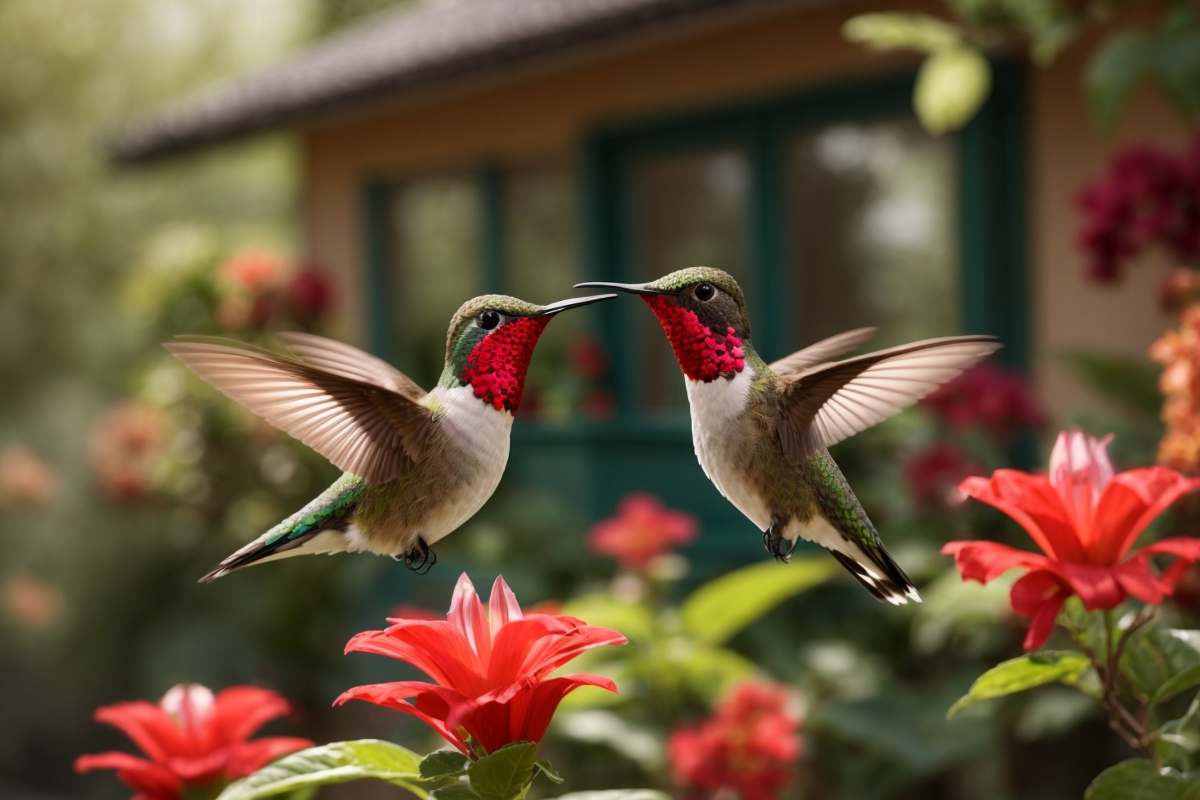Hummingbirds are renowned for their small size, agility, and long migratory journeys. However, their most remarkable characteristic is their innate ability to migrate. Many bird enthusiasts eagerly await hummingbird season in Minnesota to observe these fascinating creatures.
While there are no resident hummingbird species in Minnesota, residents can still expect to spot a common species of hummingbird that arrives during warm weather. This is an exciting time to witness the vibrant presence of these tiny birds. However, as temperatures drop and winter approaches, the hummingbirds begin to leave Minnesota. Let’s explore when this migration occurs.
When Do Hummingbirds Leave Minnesota?
Hummingbirds typically leave Minnesota when summer transitions to winter, usually between late August and early September. By mid-September, the last stragglers of migrating hummingbirds will have departed from the state.
It’s important to note that any hummingbird species found in Minnesota after this time are likely Ruby-throated hummingbirds, as they are the only species that commonly nest in the state.
What Species Of Hummingbirds Are Commonly Found In Minnesota?
Out of the 350 species of hummingbirds worldwide, the most commonly seen species in Minnesota is the Ruby-throated hummingbird. However, it’s essential to understand that this species is not a permanent resident but rather a seasonal visitor.
Occasionally, rare hummingbird species, such as Anna’s, Calliope, and Rufous hummingbirds, can be spotted in Minnesota. These sightings are considered accidental and are not as common as the Ruby-throated species.
Where Can You Find Hummingbirds In Minnesota?
Minnesota, known as the land of 10,000 lakes, offers numerous spots where hummingbirds can be frequently observed upon their arrival. These birds are often found in serene nature reserves, wooded areas, and gardens in Minneapolis. Interestingly, you can attract them to your own space by planting nectar-rich native plants.
When Do Hummingbirds Arrive In Minnesota?
The Ruby-throated hummingbird typically arrives in Minnesota around late April to early May. The exact timing of their arrival may vary slightly each year due to weather conditions and food availability.
Do Hummingbirds Arrive In Minnesota At The Same Time?
Unlike other birds that migrate in flocks, hummingbirds are solo travelers. As a result, they do not migrate at the same time and arrive in Minnesota at different intervals. Male hummingbirds are usually the first to arrive, establishing their territories. The females join them shortly after.
Do The Migration Patterns Of Hummingbirds In Minnesota Change?
The migration patterns of hummingbirds in Minnesota are not fixed and can change. While hummingbird migration is instinctive, various factors, such as weather conditions and food supply, can influence their patterns. These birds migrate to regions with tropical climates that provide abundant food sources, such as nectar from flowers and insects.
How To Prepare For The Arrival Of Hummingbirds In Minnesota
To attract hummingbirds to your garden in Minnesota, it’s essential to cultivate plants that are pollen-friendly. Native plants are particularly effective in attracting these birds, as they provide a natural source of nectar and contribute to the local ecosystem. Some examples of native flowers in Minnesota that can attract hummingbirds include cardinal flowers, columbine, beard tongue, native coral bell, trumpet creeper, bee balm, native salvias, native penstemons, hibiscus, and fuchsia.
Can You Attract Hummingbirds With Feeders In Minnesota?
In addition to planting native plants, you can attract hummingbirds to your space in Minnesota by providing feeders. Fill these feeders with artificial nectar made from a cup of white sugar and four cups of water. However, it’s important to note that nectar feeders only serve as a supplementary diet for hummingbirds and do not provide them with their full nutritional needs. To avoid bird fights, consider hanging multiple feeders filled with sugar-water solution at different locations.
When Should You Put Out Your Hummingbird Feeders In Minnesota?
To attract early migrators in Minnesota, it’s recommended to put out your feeders about a week or two before their expected arrival. Mid-April is an ideal time to start putting out your feeders. Remember to change the nectar solution every few days, especially in warm weather, to keep it fresh and safe for the hummingbirds.
When Should Hummingbird Feeders Be Taken Down In Minnesota?
As a general guideline, it’s advisable to take down your feeders at least two weeks after you last spot hummingbirds at your feeders. In Minnesota, it’s safe to remove your feeders in mid-September.
Can I See Hummingbirds During Winter In Minnesota?
Since there are no resident hummingbird species in Minnesota, it is highly unlikely to come across hummingbirds during winter. The common species found in the state, the Ruby-throated hummingbird, migrates to warmer regions when the weather becomes unbearable and their food supply declines. Any hummingbirds observed in Minnesota during winter are either brave individuals capable of overwintering or older and injured birds that cannot migrate.
Where Do Minnesota Hummingbirds Migrate To In The Winter?
During winter, hummingbirds from Minnesota primarily migrate south to wintering grounds in Central America and Mexico. These regions provide warm weather and an abundance of blooming flowers, ensuring a sustainable food supply for the hummingbirds during the winter months.
Conclusion
Hummingbirds possess fascinating traits, such as their ability to remember every flower and feeder they’ve visited in previous seasons. By creating a welcoming environment for them, you can expect their return in the coming seasons. Caring for hummingbirds is a rewarding task for bird lovers.
